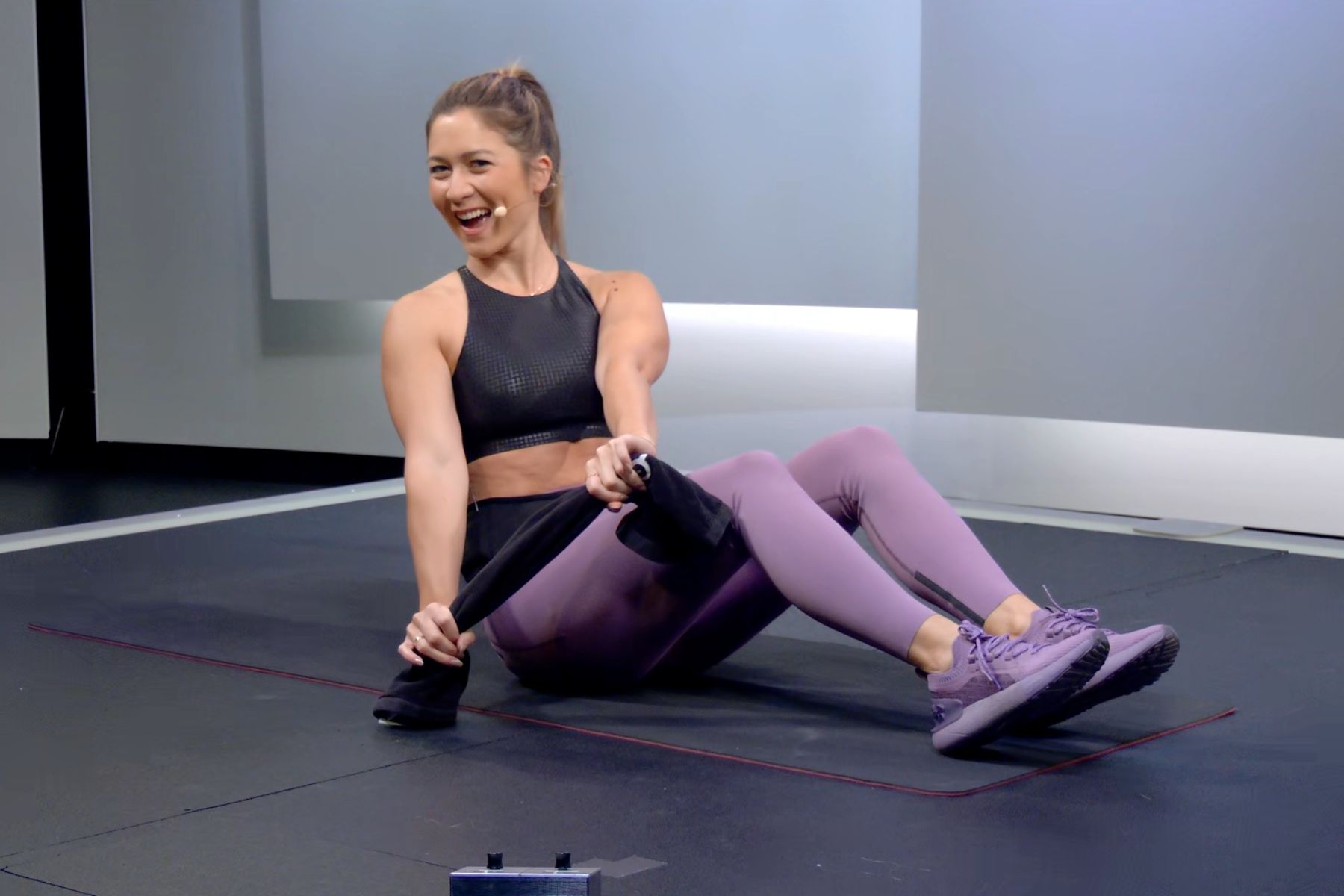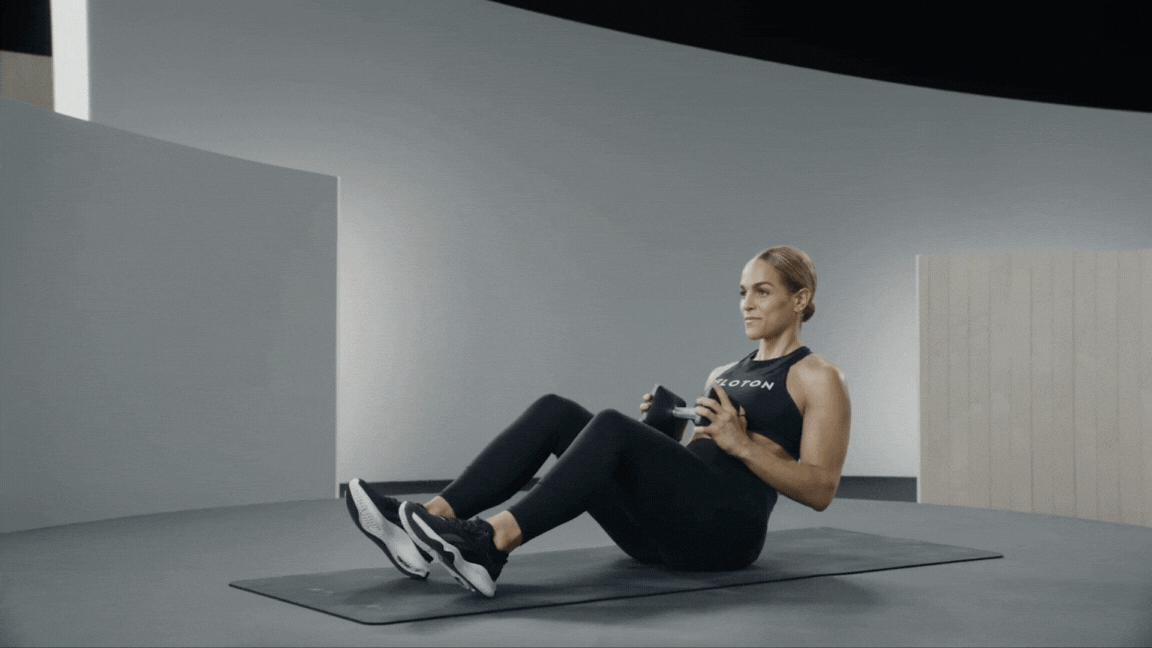
How to Do a Russian Twist for a Core and Upper Body Challenge
Perfect your form to avoid back pain and achieve maximum benefits.
By Renee Cherry•
What Are Russian Twists?
What Muscles Does a Russian Twist Work?
The Benefits of Russian Twists
How to Do a Russian Twist
Russian Twist: Modifications and Variations
Safety Considerations When Doing a Russian Twist
On paper, Russian twists may seem simple, but don’t be fooled—they can feel a lot harder than they look. While the seated exercise involves a relatively subtle rotating motion, you might start to feel like your core muscles are screaming in a matter of a few reps.
But performing crunches alone will only get you so far, and to maintain strength throughout your entire core, it’s important not to skip out on additional exercises, e.g., the Russian twist. Here you’ll find a guide to the popular core exercise, including how to do Russian twists, their benefits, and common variations.
What Are Russian Twists?
Similarly to bicycle crunches, Russian twists involve rotating your upper body from one side to the other, challenging your core stability. While core strength refers to your muscles’ ability to generate force, stability is the ability of stabilizing muscles to maintain proper posture and control during movements.
“Russian twists are an effective core exercise that involves rotating your torso from side to side while seated on the floor,” explains Peloton instructor Emma Lovewell. Depending on your fitness level and goals, you can perform the exercise with your feet elevated or resting on the ground, and with or without a weight (more details on that in a sec).
What Muscles Does a Russian Twist Work?
Your core doesn’t just include the abdominal muscles responsible for a “six pack,” but also your obliques and lower back. Russian twists target all three groups. “The primary muscles targeted during Russian twists are your obliques, which are the muscles on the sides of your abdomen,” says Emma. “They also engage your rectus abdominis (the ‘six-pack’ muscles) and your lower back muscles to stabilize your spine.”
These muscles all serve important functions, which is one reason why many fitness pros consider Russian twists to be indispensable. Your core functions as a hub of what’s referred to as the kinetic chain, and if you strengthen your limbs but not your core, you can’t reach your full athletic potential, according to a 2022 review published in Frontiers in Physiology. Essentially, the chain is made up of interconnected parts—your forearms, shoulders, hips, feet, etc.—which work together synergistically when you move.
What’s more, maintaining adequate core strength is linked to back pain prevention. That’s because when your core muscles are strong enough to function properly, they can maintain stability to protect your spine, reducing stress on the vertebrae of your lower spine, according to a review published in the Journal of Physical Therapy Science.
The Benefits of Russian Twists
Russian twists offer a slew of benefits, according to Emma. “They help improve core strength, stability, and rotational power, which are essential for activities like sports, dancing, and everyday movements,” she says. Rotational power, a measure of your strength in a short period of time across planes, is vital in sports that include swinging or throwing, like baseball, softball, hockey, lacrosse, tennis, and throwing events in track and field, according to a study published in the Journal of Strength and Conditioning Research.
Additionally, Russian twists can improve your posture, another element of physical fitness that you don’t want to ignore, especially if you spend prolonged periods of time sitting or working on your feet. Maintaining good posture is more than just an aesthetic aim; it can help you move with ease throughout the day and avoid injury in the long run.
Finally, Russian twists can boost your balance. “Balance is the ability to maintain an upright and stable standing position, not only on one foot but also in a bipedal (upright walking) position,” Peloton instructor Becs Gentry previously told The Output. “It’s a total body ‘move’ with dominant muscle groups assisting you in your core and lower body.” Balance contributes to good posture, improves your performance in activities like yoga, and allows you to avoid injuries from falls.

How to Do a Russian Twist
Ready to try Russian twists to improve your strength, balance, and stability? Here’s a step-by-step breakdown of how to perform the exercise, courtesy of Emma:
Sit on the ground with your knees bent and your feet resting on the mat.
Engage your core muscles and lean back slightly, maintaining a straight back. Clasp your hands or lift a weight in line with your chest. Raise your feet to hover off the ground in a tabletop position, if desired.
Twist your torso to the right, bringing your shoulders to face towards the right and your hands to lower towards the ground by your right hip.
Untwist so that your torso faces forward again. Then, twist to the left so that your torso faces the left and your hands lower towards the ground beside your left hip.
Continue twisting from side to side in a controlled manner while maintaining tension in your core and keeping your back straight. Make sure to breathe steadily throughout the exercise.
Russian Twist: Modifications and Variations
Whether you’re new to exercise or an advanced athlete, you can adapt Russian twists to suit your fitness level and preferences. Here are a few ways that you can modify the exercise to make it more or less difficult, according to Emma.
How to Make the Russian Twist Harder
Resting your feet on the ground throughout the exercise gives you added stability, so to make the exercise harder, you can raise your feet off the ground with your knees bent in a tabletop position before proceeding to twist from side to side.
Russian twists are also more challenging with your arms extended rather than with your elbows bent. And whether your elbows are bent or straight, you can increase the intensity of Russian twists by holding onto a single weight (such as a dumbbell, kettlebell, or medicine ball) throughout. Just make sure to choose a weight that’s manageable and doesn’t cause you to sacrifice your form.
How to Make the Russian Twist Easier
To make Russian twists easier, you’ll do the opposite of everything listed above. That is, you’ll use a light weight or bodyweight alone, keeping your feet planted on the ground rather than hovering in a tabletop position. You can also decrease the range of motion, so that your torso doesn’t twist as far to each side.
Safety Considerations When Doing a Russian Twist
If you’ve ever noticed lower back pain after performing Russian twists, that could be a result of using incorrect form. “One common mistake during Russian twists is allowing your back to round or arch excessively, which can strain your lower back,” Emma says. “To avoid this, focus on keeping your spine neutral and your core engaged throughout the movement.”
To fire up your core muscles as intended with the exercise, it’s important to focus on initiating the twist from your lower trunk. “Make sure you're twisting from your torso rather than just swinging your arms,” Emma adds. If something feels off, trust your instincts. “Always listen to your body—if you feel any discomfort, adjust your form or take a break.”
Provided that you use proper technique when performing Russian twists, the exercise can pay off. If you want to hit your core from multiple angles, increasing your strength, stability, and balance, it’s worth adding to your rotation.
Featured Peloton Instructor

Emma Lovewell
Emma has spent much of her career in fitness and wellness as a professional dancer, dance coach, fitness model, personal trainer, and Pilates instructor.
Level up your inbox.
Subscribe for a weekly dose of fitness, plus the latest promos, launches, and events.